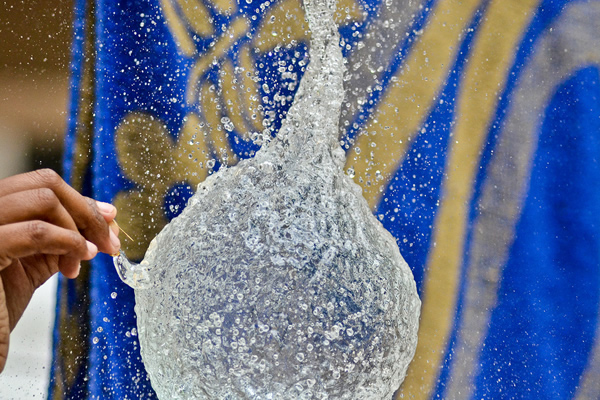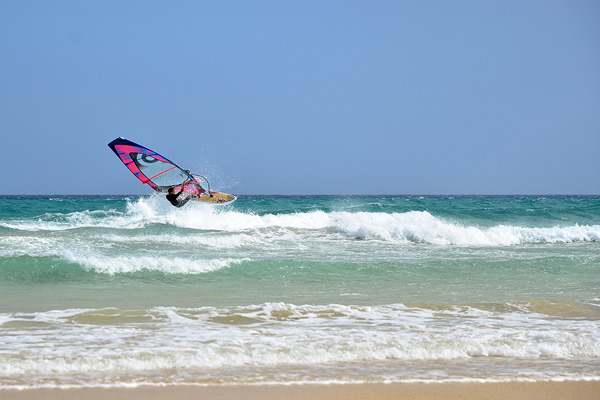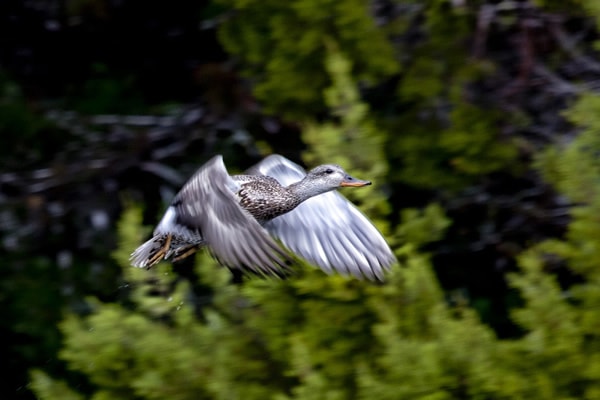How to Master Various Fast Shutter Speed Techniques
Being able to adapt to various situations where a fast shutter speed is necessary is a strength in photography. If you change the shutter speed around even just a little bit, a whole new world of photography magic and mastery opens up to you.
For example, motion-blur photography relies on slower shutter speeds…but what of fast shutter speeds? What becomes possible for you if you familiarize yourself with faster shutter speed techniques?
In essence, anything that has action and dynamism in it is a great candidate for fast shutter speeds. There’s really a limitless selection of subjects that are perfect for action photography, which also embodies the feeling of both strength and power.
Let’s take a look at how you can master taking pictures of water balloons, taking pictures of windsurfers and even capturing birds in flight, all of which rely on fast shutter speeds to get highly effective results.
Taking Shots of Water Balloons
Water balloons take you right back to childhood! You fill them up, you throw them and you watch them explode…fun! Even if you’re now a serious photographer as an adult, you can still use them to explore a technique that relies on quick shutter speeds to demonstrate the dramatic effect of exploding water.

photo by Sunil Soundarapandian
Start by filling several (for more explosive fun) balloons with water. Choose an aperture that provides front-to-back sharpness for the purpose of capturing every delicious bit of explosive action. To ensure the balloon is the star of the shot, pick a plain background like a hedge or wall.
The key to this technique is to “freeze” the water (at least that’s how it’ll look) by utilizing shutter speeds between 1/250 and 1/300. Set a continuous shooting mode and focus intently on the balloon, awaiting the magic moment that it bursts. You’ll also want the help of another person who will burst the balloon for you as you snap away. Have them try popping the balloon from the top for the best results!
If experimentation is your forte, you can even make your exploding-water-balloon shots colorful by incorporating food color to the water. Needless to say, this could stain your clothes, so do wear old stuff when you’re experimenting with this technique. Another neat trick is letting the balloon fall onto a surface so that it bursts; you can then shoot the water as it ascends and then washes down and also beside the balloon’s remains.
Taking Pictures of Windsurfers
Windsurfing’s becoming a bit more popular these days, so why not snap some shots of fast-moving windsurfers to perfect your shutter-speed skills? If you live near the coastline, you can sometimes find these enthusiasts skimming along the surface of the water. Still, it can be hard to get even a decent shot due to factors like horrible weather, bad light and even their crazy speeds.

photo by Dirk Vorderstraße
Set your shutter speed way up until you can “freeze” the windsurfers’ movements. Alternately, you can always go for a slightly slower shutter speed in order to incorporate an additional sense of pace; then, you should pan at the same velocity the windsurfers are moving to obtain a blurry background (a cool effect!). Be sure to also fill your entire frame with your subject since it’s much more exciting to see a windsurfer up close than having a small individual against a backdrop of lots of water.
Make sure you’re monitoring your metering as you’re doing this because either reflections from the water’s surface or a too-bright sky will confuse the camera into believing it’s brighter than it really is. As a result, you’ll snap an underexposed image! On the other hand, if you want to create a silhouette, this could actually be useful to you. On the issue of sun, your pictures could appear quite flat if you’re out on a day with poor light. Still, if you crop in close, for example, to showcase the dramatic spray coming off of the boards, then you could still obtain some nice shots.
Capturing Birds in Flight
Few things are as evocative and dramatic as birds in flight. Again, freezing their flight and movement is key here, which you’ll accomplish by using shutter speeds of at least 1/500. It’s a smart move to utilize a speed priority mode. On the other hand, you might want to just rely on aperture priority mode and simply watch for the necessary shutter speed for your aperture of choice.

photo by Justin Jensen
Depending on what specific type of bird photography you want to pursue, you could go with a mere 200mm lens if you just want to focus on casual, handheld pictures. If your objective is to use a longer reach and heavier, dedicated lenses that need actual support systems, then choose a 300mm lens.
Utilize the single-point AF that’s available in continuous-tracking mode to get in so close to a bird that you can lock onto its eyes! Such a shooting mode will lock right onto the AF point that you pick and keep on refocusing so long as your shutter button remains half-pressed.
With regard to exposure, if the contrast between the background and subject is great, then it’s best to utilize weight-spotted mode and make any adjustments as necessary. A matrix mode will be good for homogeneously lit situations, such as bird planing along the sandy beach of your choice. Don’t leave anything up to chance, though: Be sure to consistently evaluate your outcomes as well as histograms and then adjust as the situation dictates.
Fast Shutter Speeds: They’re for Speed Demons
Mastering fast shutter speeds will open up new possibilities in photography, not to mention broaden your horizons. All the subjects of fast shutter-speed photography have the following in common: They move really, really fast, hence the need for quicker shutter speeds. Whether it’s the kiddie excitement of water balloons exploding in mid-air, the velocity of windsurfers out on the open water or the majestic flight of birds, speed is a constant.
Some photographers would shy away from mastering this dynamic technique, but c’mon! You’re better than that. This is an exciting, new challenge that will allow you to add another technique to your photography repertoire. So many photographers are content to just take pictures of non-moving subjects… and that’s a limitation. Adding speed into your pictures will produce some highly amazing results.
Have you ever experimented with fast shutter speeds before? Are you interested in doing so, but never quite mustered the determination to give it a try? Do you think this technique is something worthwhile to begin with? Tell us all about it via Twitter or Facebook, and continue making Contrastly your premier source for photography on the web.
